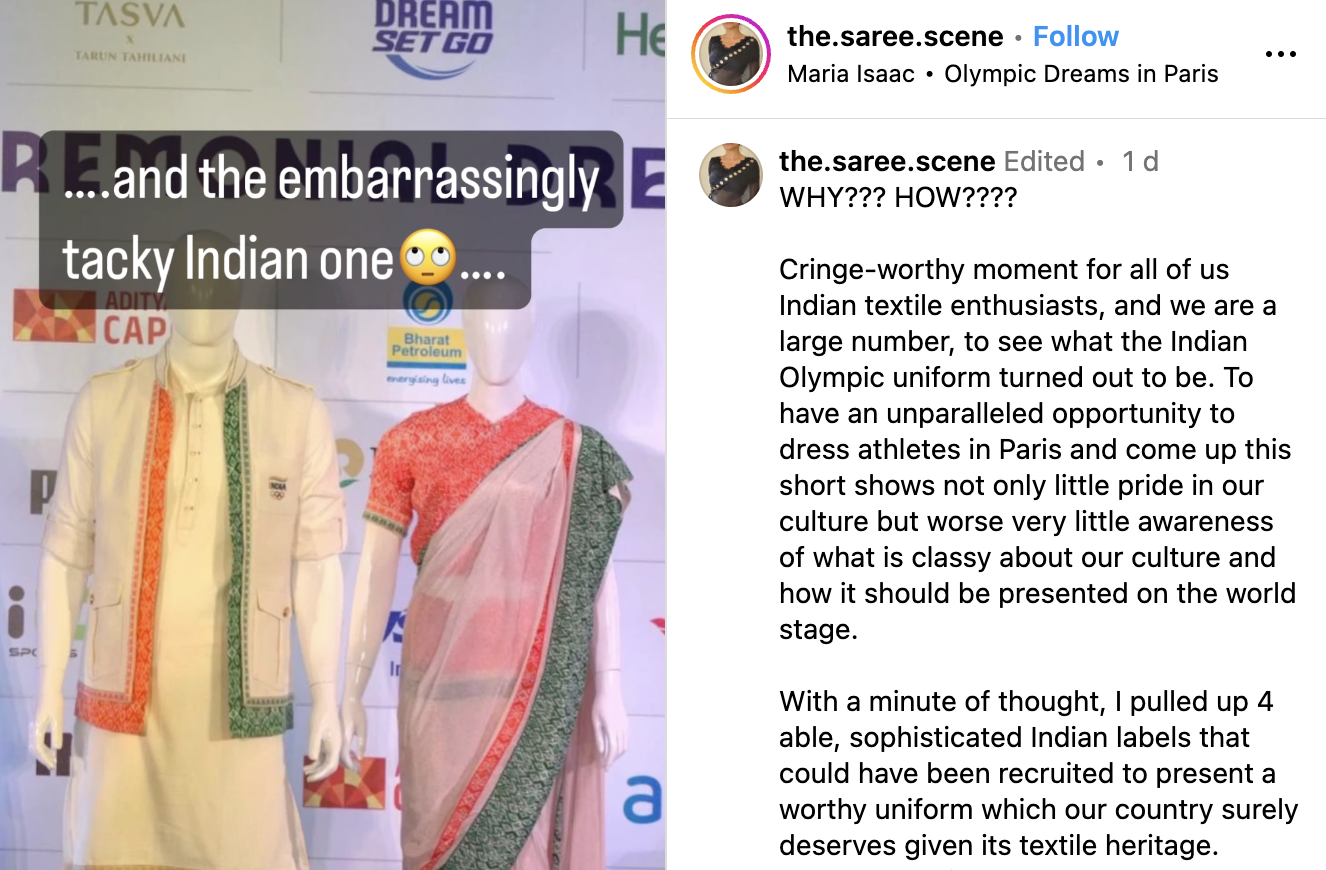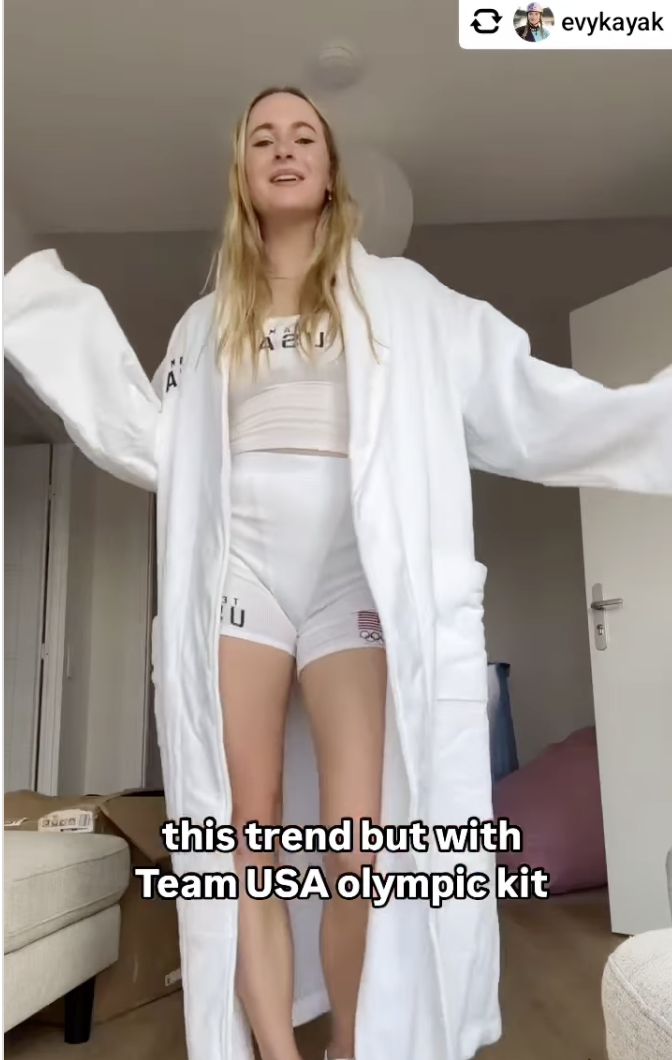
Olympic Uniforms: where nationhood, culture & fashion meet
- Sport
Fashion has always had a part to play at the Olympics, but this year even more so. The organizers of Paris 2024 have leant into this aspect of the city's identity, from the 'Marianne' logo (which for many audiences is less evocative of the republic personified than it is the city's fashionista past) all the way to the Phryge hat mascots.
But it's not just the organizers who have made decisions around design, brand and identity. Each nation also has released, in the run-up to the opening ceremony, its own Olympic uniform. These have fallen under sharp scrutiny from the public preparing to watch from home, fashion experts ready to hand out critiques, and political commentators looking for extra meaning in the design choices.
And within this conversation, a single country’s Olympic uniform has already set the internet ablaze.
MONGOLIAN OLYMPIC OPENING UNIFORM THEY WIN THIS IS BEAUTIFUL pic.twitter.com/CHakdx4JIZ
— Mari (@chlorinemommy) July 10, 2024
At the same time, the conversation around Olympic uniforms is rapidly shifting from simple fashion statements to major global talking points, which touch on matters of geopolitics:
Mongolia's Olympic uniforms are lovely. But what's up with the wording on this tweet? Is the insinuation that we don't do the same? Let's talk about how the USA Olympics uniform connects to our heritage, culture, and history. 🧵 https://t.co/bD8w50cBVY
— derek guy (@dieworkwear) July 17, 2024
So what's does this conversation look like, which audiences chiming in, and how does this play out for the brands involved?
Olympic Uniform Trends and Trailblazers
We can use Pulsar TRAC to unpack how the Olympic uniform conversation is being shaped and evolving across social media, search interest, and news coverage.
A few posts about Team Mongolia’s uniform peaked social interest on July 12, garnering over 1.9M views on X (as of writing). This social media frenzy soon translated into increased search interest and news coverage, catapulting the uniform into the viral spotlight and helping spark debates about different countries' uniforms.
Why is Mongolia's conversation such an outlier in terms of social-news split?
This is partly because Mongolia does not have the same PR and Comms muscle as wealthier nations. Instead, Mongolia’s newfound prominence is in part due to commentary on platforms such as TikTok, in which users offer critiques akin to those of seasoned fashion and sportswear critics.
While conversation around other nations such the USA, France, and Australia is driven by global english news coverage, India and South Korea are similar to Mongolia in experiencing a notable social uptick - India due to its local buzz and South Korea thanks to the K-pop fever sweeping the globe.
Of course, volume does not necessary equate to approval, which becomes clearer when we dive into the public’s attitudes towards each country’s uniform.
We can clearly see Team Mongolia’s uniform has generated a dominant sentiment of positive surprise, with the small degree of negativity within this conversation largely stemmed from citizens of other nations, such as Indians who see their own uniforms as falling short compared to Mongolia’s.
The nearly split sentiment towards Team USA’s uniforms indicates a mixed reception among Americans. While some are weary of Ralph Lauren’s recurring blazer design, others view it as a reassuring cultural staple.
All that clothing to wear for the Summer games? Did Ralph Lauren not take the temperature into consideration?
— Lu Frew (@sweetlu1234) June 18, 2024
Meanwhile, Australia’s Olympic uniform chatter is largely centred on a viral TikTok, with the awkward reaction of two Matildas travelling far beyond the football or Australian fandoms.
A largely female audience of commentators decry the uniform as anything from 'impractical' to 'something your parents dress you in'.
A more complex case is South Korea's uniform, which has sparked a hostile conversation among global fandoms, though not locally. This centres on posts suggesting that the South Korean torchbearer might wear some form of Palestinian iconography as protest - which has sparked intense debate within the K-pop fandom.
Seeing Jin in the Olympics uniform evokes a strange emotion in me. Its a mix of hope and doubt..... praying to every God above that he uses this golden opportunity to stand in solidarity with Palestine 🙏
— Kiara💫 (@ggukbubbles_24) July 14, 2024
So, who is driving the Olympic Uniform conversation? Mapping the audience for Olympic uniform discussions spotlights three groups based on their community behaviour and commonality.
Global Progressive News Buffs play a crucial role in shaping the broader narrative by disseminating uniform news and connecting diverse communities.
In addition to highlighting countries such as Mongolia, this community (and the broadsheet newpapers and magazines they read and amplify) also serve as a conduit between more localized communities such as US progressives, Kenyan music enthusiasts, and Malaysian political observers. The communities are more preoccupied with questioning if designs reflect their own countries' values.
If anything, the uniform shows how serious a country takes its sports & the #Olympics. Don’t need to compare with the Americans or Europeans. Our neighbours 🇹🇭 and 🇵🇭, put more effort. And definitely don’t need to say what’s the point of a nice uniform if don’t win 🥇? Just 🤫 https://t.co/SSb0ECOXmY
— Aysha Ridzuan (@ayshardzn) June 26, 2024
Last but not least, interest-based communities such as K-Pop Fandoms, Fashion Lovers and Badminton Fans view the uniform releases through the prisms of their own interest.
Takeaways for brands
The Olympics is a sporting event that transcends traditional sporting fandoms, and this is clearly evidenced by the audiences taking part in this conversation. By isolating the themes in the conversation, we can see how this trend taps into various touchpoints, from aesthetics and sustainability to shopping hauls.
Olympic uniforms are often seen as potent branding tools that grab global attention but also turn countries into key conversation pieces, in something of a dry-run for the Olympic competition to come. This trend makes content centered around country rankings particularly compelling.
And it’s no surprise that Olympic sportswear content mirrors the latest aesthetic-driven trends, such as unboxing and haul videos. Gen-Z fashion enthusiasts engage with and amplify content from athletes that taps into these trends.
Mongolia's Olympic uniforms, and their much admired bucking of more traditional fashion norms, are also driving a wave of creativity, with many using AI to design their own outfits and compare them with the more lackluster uniforms from other nations.
Who is responsible for designing the Canadian Olympic uniforms? AI could have done a better job. pic.twitter.com/dkw4MDShT7
— Cister Hood (@Cister09) July 23, 2024
In the global sports scene, major brands will continue to make their mark at the Olympics, but the names and faces gracing the podium are shifting.
Several brands stand out with strong social media presence, including Ralph Lauren, Nike, and The North Face. Meanwhile, high fashion brands often find that their main drivers of conversation are industry magazines more so than social conversation.
Again, simple volume of mentions can disguise the more nuanced narratives taking place amongst audiences. For instance, even as brands like Ralph Lauren and Nike have faced criticism from the US audience over their design choices, The North Face has experienced high engagement on social media, largely due to its contribution to Korean Olympic uniforms and the enthusiastic support and engagement from global K-pop fandoms.
To stay up to date with our latest insights and releases, sign up to our newsletter below:




